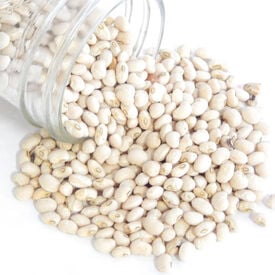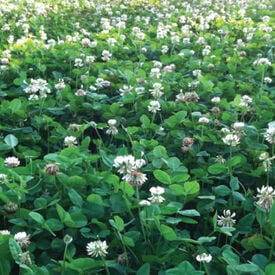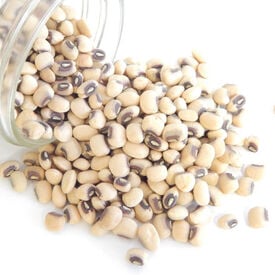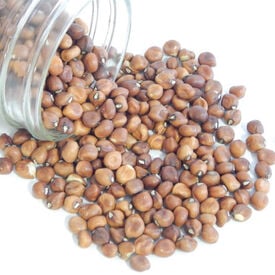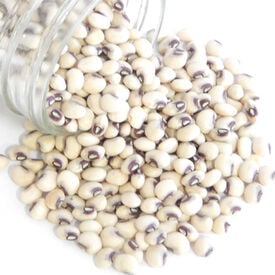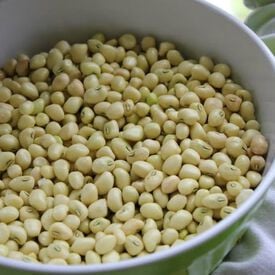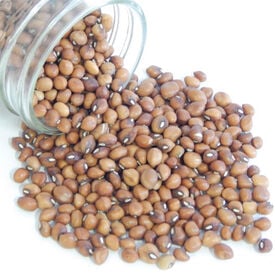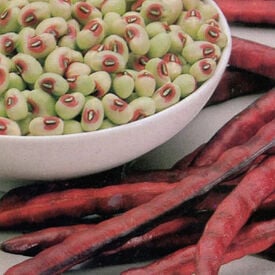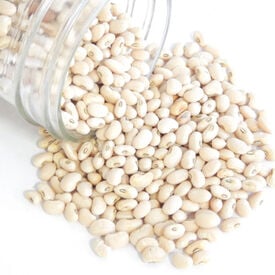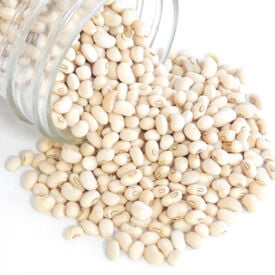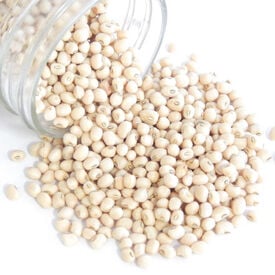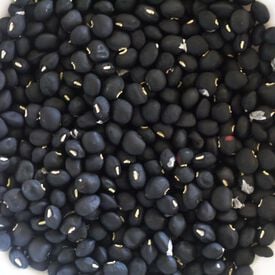The Texas Cream is a heavy yielding Southern cowpea that is great for fresh shelling. This variety is very similarly to 'Sadandy' but the cowpeas are slightly larger. These bush-type plants are prolific and thrive in hotter, Southern weather. Texas Cream is a "cream pea" type variety, they are generally used at the fresh shelling stage. Treated Seed.
The Medium Red Clover is fast to establish and can be grown in most soil types as well as sowed in spring, summer or fall! This clover works well for hay or silage. The Medium Red Clover can be used as a cover crop between rows of vegetable crops if mowed to maintain manageability. This clover can fix up to 150 lb. of nitrogen per acre. Uses: Bees & Beneficial Insects, Chicken Forage, Compaction Control, Deer Attractant, Erosion Control, Forage, Green Manure, Nitrogen Fixation, No Till, Weed Suppression
The Ladino Clover is the most popular white clover in the USA as it is two to four times as large as the common white clover! This clover has a high nutritive value and is palatability, making it a popular choice in pasture mixtures. It is not deep rooted, and will not tolerate much drought. Ryegrass and orchardgrass work well with ladino clover in mixtures. Broadcast at 25 lbs. per acre. Seed comes inoculated. Uses: Bees & Beneficial Insects, Chicken Forage, Compaction Control, Deer Attractant, Erosion Control, Forage, Green Manure, Nitrogen Fixation, No Till, Weed Suppression
Growing your own forage for your chickens is a cheap, easy, and a highly nutritious way to feed your chickens. Chicken feed can be expensive to provide throughout the year. Growing your own from spring to fall provides high levels of nutrients that will make your eggs taste even better. Foraging chickens have a better balanced diet that creates better eggs and meat. This chicken forage blend is a mix of well balanced plants that chickens love to eat. Spread at 5 lbs. per 1,000-2,000 square feet. 100 lbs will cover 1 acre. Mixture includes: Annual Ryegrass, Perennial Ryegrass, Buckwheat, Flax, Millet, Forage Peas, Red Clover, Alfalfa
The Quickpick Pinkeye cowpea is a bush type southern cowpea with early maturity and good disease resistance. This variety is a pinkeye Purplehull type variety that is determinate, erect, compact (reach about 20 inches), and non-vining. This cowpea gets its name, Quickpick, because it matures in about 60 days. The pods are dark-purple and about seven to eight inches long containing nine to eleven, kidney-shaped seeds with large, maroon colored eyes. If you are using for Nitrogen fixation we highly recommend using a cowpea inoculant. Try with cowpea inoculant for maximum Nitrogen fixation.
The Dimpled Brown Crowder is an excellent cowpea for canning, freezing or drying. The Dimpled Brown Crowder Cowpea is a prolific yielder with pods that contain 12-15 peas that are closely bunched together. If you are using this variety for Nitrogen fixation, we highly recommend using a cowpea inoculant. Try with cowpea inoculant for maximum Nitrogen fixation.
Pinkeye Purple Hull cowpea is one of the most popular varieties preferred by Southerners. Cowpeas in general are great for drying and canning. This variety's hulls are purple and its cowpeas are green with pinkeyes when freshly picked turning cream with dark maroon when dried. The Pinkeye Purple Hull produces pods that are six to seven inches long and purple. If you are using for Nitrogen fixation we highly recommend using a cowpea inoculant.
The Zipper Cream cowpeas are very easy to grow and are a tasty Southern favorite! This variety produces bushy 2-3' plants that bear heavy yields. The 6-9" large pods have large, creamy-white seeds. There are 18-20 seeds per pod. The Zipper Cream is an easy to shell cowpea. Treated Seed.
The Mississippi Silver cowpea is adapted to hot humid climates, but does well in most climates. This variety produces pods 6-7 " long, and that are colored silver, occasionally streaked with rose. The Mississippi Silver is easy to grow and shell. If you are using for Nitrogen fixation we highly recommend using a cowpea inoculant. Try with cowpea inoculant for maximum Nitrogen fixation.
The Knuckle Purple Hull is a bush type cowpea producing heavy yields of purple pods. Cowpeas in general are great for drying and canning. This variety tends to stay off the ground and cluster making for easy picking. This cowpea is referred to as a "Knuckle Hull" because of the big, plump cowpeas. Try with cowpea inoculant for maximum Nitrogen fixation.
The Elite cowpea is a bush type cream southern pea that produces heavy yields of 7" pods with cowpeas that are delicious and easy to shell. This cowpea is one of the most productive of all the cream peas. If you are using for Nitrogen fixation we highly recommend using a cowpea inoculant. Try with cowpea inoculant for maximum Nitrogen fixation.
The Sadandy cowpea is a heavy yielding Southern pea great for fresh shelling. The Sadandy variety is very similarly to 'Texas Cream' but the peas are slightly smaller. These bush-type plants are prolific and thrive in hotter, Southern weather. The Sadandy is a "cream pea" type variety, they are generally used at the fresh shelling stage. If you are using for Nitrogen fixation we highly recommend using a cowpea inoculant.
Lady is the smallest and most tender Southern cowpea on the market. This cowpea variety is a popular and hard to find southern cowpea. Lady is excellent freshly cooked and very tender. The short plants are great for small gardens, and yields are high. If you are using for Nitrogen fixation we highly recommend using a cowpea inoculant. Try with cowpea inoculant for maximum Nitrogen fixation.
The Black Crowder cowpea is a high yielding variety of long pods. The cowpeas themselves have a deep purple color when first shelled which then turn black when dried. The Black Crowder's green pods are easy to shell. Try with cowpea inoculant for maximum Nitrogen fixation.
Phenomenal cowpeas are a remarkable variety known for their impressive yield and versatility. These cowpeas produce robust, productive plants that are well-suited to a variety of growing conditions, making them a favorite among gardeners and farmers. Characterized by their large, green pods and high nutritional value, Phenomenal cowpeas offer a rich source of protein, fiber, and essential vitamins. The plants typically reach about 2 to 3 feet in height and can be grown both in garden beds and containers. They are valued for their resilience in hot and dry climates, which makes them particularly well-adapted to regions with challenging weather conditions. With a maturity period of around 70 to 80 days, Phenomenal cowpeas provide a generous harvest of flavorful, tender beans that can be enjoyed fresh, dried, or cooked in a variety of dishes. Their adaptability and high productivity make them a standout choice for both home gardeners and commercial growers.
